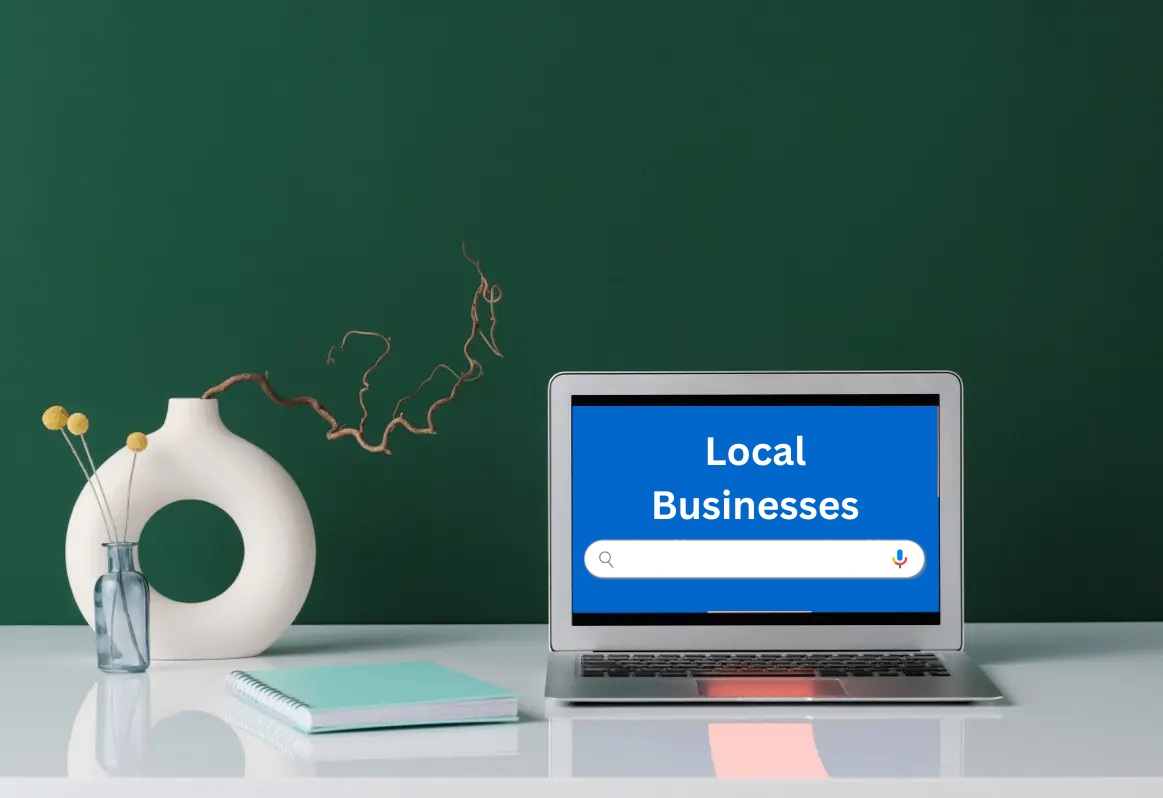In today’s digital world, most customers start their search for local services online. Whether they’re looking for a nearby coffee shop, plumber, or salon, they often rely on search engines like Google to find what they need.
This makes Search Engine Optimization (SEO) essential for local businesses. By optimizing your online presence, you can stand out to customers in your area, bring in more foot traffic, and grow your business.
In this blog post, we’ll explore simple and effective SEO strategies you can use to improve your local visibility. Don’t worry if you’re not a tech expert—these tips are easy to follow and designed for small business owners like you.
Claim and Optimize Your Google Business Profile
Imagine a potential customer searches for “best pizza near me.” Google usually shows a map with local listings at the top of the results. To appear here, you need a well-optimized Google Business Profile (GBP).
How to Do It:
- Claim Your Profile: Go to Google Business and claim your business listing if you haven’t already.
- Complete Your Details: Add your business name, address, phone number, and website. Include your hours of operation, photos, and a brief description of what you offer.
- Choose the Right Categories: Select categories that match your business. For example, if you run a bakery, choose “Bakery” and “Dessert Shop.”
- Encourage Reviews: Ask satisfied customers to leave reviews. Positive reviews make your business look trustworthy.
Real-Life Example: A small flower shop in Austin added fresh photos of their floral arrangements to their profile. They also encouraged happy customers to leave reviews. Within weeks, their profile ranked higher, and they saw more foot traffic during weekends.
Use Local Keywords on Your Website
Keywords are the words and phrases people type into search engines. To attract local customers, include location-based keywords on your website.
How to Do It:
- Add Location Keywords: Use terms like “plumber in Chicago” or “cozy café in Seattle” in your headlines, page titles, and descriptions.
- Create Local Content: Write blog posts about local events, tips, or news related to your business. For example, a fitness studio could write about “Top 5 Outdoor Workout Spots in Denver.”
- Include Keywords Naturally: Don’t stuff your content with keywords. Make it sound natural and easy to read.
Real-Life Example: A car repair shop in New York created a blog post titled “How to Prepare Your Car for Winter in NYC.” This helped them attract more visitors searching for winter car care tips.
Make Sure Your Website is Mobile-Friendly
Most local searches happen on mobile devices. If your website is slow or hard to use on a phone, potential customers might leave before they find what they need.
How to Do It:
- Test Your Website: Open your website on your phone and check if it’s easy to navigate.
- Use Simple Design: Avoid clutter and make sure buttons are easy to click.
- Speed It Up: Use tools like Google’s PageSpeed Insights to check your website’s speed. Compress images and remove unnecessary elements to improve loading time.
Real-Life Example: A family-owned bookstore in San Francisco redesigned their website to be mobile-friendly. Customers could now browse books and check store hours easily on their phones, leading to an increase in weekend sales.
Get Backlinks from Local Websites
Backlinks are links from other websites to yours. They act as votes of confidence and help your site rank higher in search results.
How to Do It:
- Partner with Local Businesses: Collaborate with nearby businesses to link to each other’s websites. For example, a yoga studio could team up with a local health food store.
- Sponsor Local Events: If you sponsor a charity run or community event, ask them to include your link on their event page.
- List Your Business in Local Directories: Add your website to directories like Yelp, Yellow Pages, and local chamber of commerce websites.
Real-Life Example: A cleaning service in Miami partnered with a local interior design firm. The firm linked to the cleaning service’s website in their blog post about “Post-Renovation Cleaning Tips.” This backlink brought new leads to the cleaning service.
Engage with Your Community on Social Media
Being active on social media not only helps you connect with customers but also boosts your SEO. Google considers social signals like shares and engagement as a sign of your business’s credibility.
How to Do It:
- Post Local Updates: Share updates about local events, promotions, or behind-the-scenes moments at your business.
- Use Local Hashtags: On platforms like Instagram, use hashtags like #ShopLocalSeattle or #AustinEats to reach nearby users.
- Respond to Comments: Engage with your audience by replying to their comments or messages.
Real-Life Example: A boutique in Los Angeles posted photos of their new collection and used the hashtag #LAFashion. A local influencer shared their post, driving more visitors to their store and website.
Improving your local SEO doesn’t have to be complicated. Start by claiming your Google Business Profile, using local keywords, and ensuring your website is mobile-friendly. Build relationships with local businesses and engage with your community on social media. These small steps can lead to big results over time. Remember, SEO is a marathon, not a sprint. Stay consistent, track your progress, and adjust your strategies as needed. You’ve got this!
What’s Your Next Step?
Now it’s your turn! Have you tried any of these strategies for your local business? Do you have other tips to share? Let us know in the comments below. Together, we can help local businesses thrive in the digital age!
FAQs
Local SEO is the process of optimizing your online presence to attract customers in your specific area. It’s crucial for local businesses because most people search for nearby services online. Appearing in local search results can help you get more foot traffic, calls, and customers.
Local SEO isn’t instant—it’s more like planting a seed and waiting for it to grow. You might start seeing small improvements in a few weeks, but significant results typically take 3-6 months of consistent effort.
While having a website helps boost your local SEO efforts, it’s not mandatory. You can still optimize your Google Business Profile and social media pages to attract local customers. However, a website adds credibility and gives customers more information about your services.
Ask your satisfied customers to leave reviews on Google, Yelp, or other platforms. Make it easy by sending them a direct link. You can also offer small incentives like discounts or freebies (if allowed by the platform’s guidelines).
Think like your customers. What would they type into Google to find your business? Use free tools like Google’s Keyword Planner or simply check Google’s autocomplete suggestions when you type in a search related to your business.





